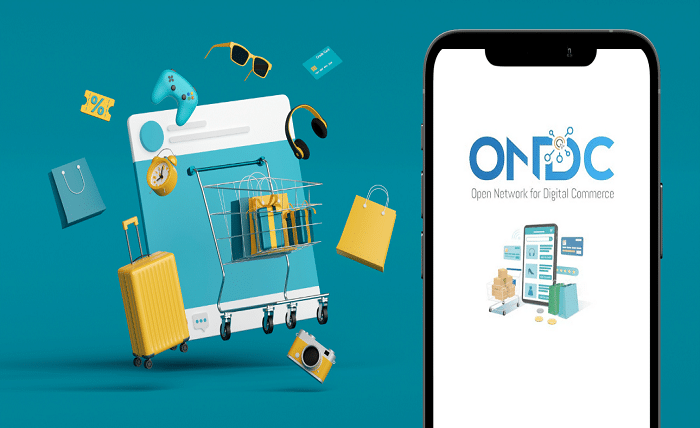Introduction:
Imagine a world where you’re not limited to just a few giant e-commerce platforms to buy or sell your goods. A world where choice, transparency, and fair competition thrive. This is the vision behind the Open Network for Digital Commerce (ONDC), a game-changer in India’s digital marketplace landscape.
Breaking Free from Platform Silos:
For years, the Indian e-commerce scene has been dominated by a handful of large platforms, dictating terms for both sellers and buyers. This has led to concerns about high fees, limited choices, and monopolistic practices. ONDC aims to dismantle these silos and create a level playing field for all participants.
The Core Principles of ONDC:
- Openness: Any buyer or seller app can participate in the network, fostering diversity and competition.
- Standardization: Common protocols and data formats ensure seamless interoperability across platforms.
- Decentralization: Power shifts from centralized platforms to individual buyers and sellers.
- Transparency: Prices, terms, and seller information are readily available for informed decision-making.
- Buyer Centricity: Buyers have more choice, control, and bargaining power in a competitive market.
Benefits for Sellers:
- Reach a wider audience: Access millions of potential customers across various platforms.
- Reduced dependence on single platforms: Escape high fees and unfair conditions.
- Direct control over pricing and branding: Build your own brand identity without platform restrictions.
- Data ownership and insights: Gain valuable data about your customers and market trends.
Benefits for Buyers:
- Wider selection of products and services: Discover hidden gems and unique offerings beyond dominant platforms.
- Competitive pricing and better deals: Compare prices and negotiate with sellers directly.
- Improved trust and transparency: Access detailed information about sellers and products.
- Support local businesses and entrepreneurs: Choose from a diverse range of independent sellers.
Challenges and the Road Ahead:
While ONDC holds immense promise, it’s still in its early stages. Challenges like platform adoption, user awareness, and regulatory hurdles need to be addressed for widespread success. However, the government’s commitment and ongoing initiatives, such as buyer app development and seller onboarding campaigns, are paving the way for a brighter future.
ONDC in Action: A Glimpse into the Future:
Imagine this: You’re looking for a new pair of shoes. You open your local grocery store app, which is now an ONDC participant. You browse through offerings from various shoe stores across the city, compare prices, and even chat directly with sellers. You choose a local boutique with unique handcrafted shoes, pay through your preferred digital wallet, and get them delivered conveniently. This is the seamless experience that ONDC promises.
Conclusion:
ONDC is more than just a technology platform; it’s a movement for a fairer, more open, and inclusive digital economy. By empowering both sellers and buyers, ONDC has the potential to revolutionize e-commerce in India and beyond. As the network grows and evolves, we can expect to see a vibrant ecosystem of diverse platforms and businesses flourish, offering a truly enriching experience for all participants.
FAQs:
- What is the difference between ONDC and existing e-commerce platforms? ONDC is not a platform itself but an open network that existing platforms can join. It promotes competition and choice for both buyers and sellers, unlike the closed ecosystems of traditional platforms.
- Is ONDC safe and reliable? ONDC ensures transparency and buyer protection through standardized protocols and data security measures. However, it’s still advisable to research individual sellers before making purchases.
- How can I participate in ONDC? As a buyer, you can use any ONDC-enabled app to access the network. As a seller, you can register with an ONDC-compliant seller platform to list your products and services.
- What is the future of ONDC? ONDC is rapidly evolving, with new features and integrations constantly being developed. Its success will depend on continued government support, platform adoption, and user awareness.
Read more about: how to invest

